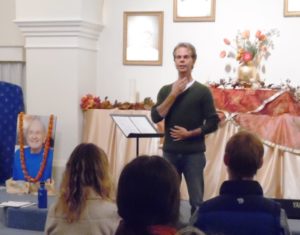Incorrect use of the low rang is one of the most common issues that I run into in working with singers. Most women resist singing in their chest voice and tend to sing everything in their head voice. I believe this is because it’s easier and the quality of the tone is more ethereal and less masculine.
There are significant problems with this approach:
- The voice in the low range sounds weak and breathy
- It’s extremely difficult to sing low notes as they simply won’t come out!
- It’s impossible to sing loud in the low range. Volume decreases the lower you sing.
- The quality of the tone is often gravelly.
There can be other reasons for not wanting to use the chest voice, ones that are rooted in our emotions and psyche. I discovered this while helping public speakers develop a strong, resonant speaking voice.
A strong, yet relaxed speaking voice is deeply connected to self-confidence. Often those who speak with a breathy voice were told many times as a child to be quieter. They may have been told to not sing, or to just lip sync because they were judged to be inadequate singers. When working with these students and we touch on making their voices fuller, buried emotions are often released, revealing the deep connection between the voice and our emotions. Working on the voice acts as a catalyst to bring deeply rooted issues to the surface.
A full voice communicates clarity of expression and conviction. If it’s forced out it’s often perceived as revealing insecurity. A voice that is full, strong, resonant, and without strain, conveys an attitude of self-confidence that is not imposing and is without ulterior motive. This predisposes the audience to be more receptive to you and what you have to share.
For a singer, a full, resonant voice means a larger “bandwidth”, better suited to sharing energy and inspiration. The correct use of the chest voice ensures that inspiration is grounded, practical, and accessible by the audience. Fullness and volume are but one aspect of what you are offering to your audience. Remember to remain open to the flow of inspiration, which can only work unimpeded when you get the ego out of the way.
Learning to balance strength and self-confidence with selfless expression of inspiration is a constant process of fine-tuning and recalibrating our intentions as performers. The reward, however, is the growing, overwhelming realization that we are part of something much greater, and through singing, we can access this and share it with the world.
CHECK OUT MY LATEST VIDEO
How to REALLY Sing – How to Be a Charismatic Singer
[convertkit form=4957081]
 In 2007 I was hired as a music teacher at a spiritually-oriented, alternative college. I enjoyed teaching there; the class was small – around ten students – and they all seemed special people to me. They were exceptionally centered and wise, especially for their age.
In 2007 I was hired as a music teacher at a spiritually-oriented, alternative college. I enjoyed teaching there; the class was small – around ten students – and they all seemed special people to me. They were exceptionally centered and wise, especially for their age.